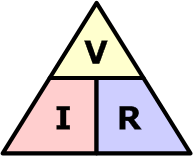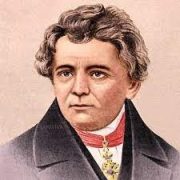
What is Ohm’s law for direct current?
Ohm’s law states that the current through a conductor between two points is directly proportional to the voltage across the two points. The mathematical equation that describes this relationship is: V = R x I Where I is the current through the conductor in units of amperes, V is the voltage measured across the conductor in units of volts, and R is the resistance of the conductor in units of ohms.
More specifically, Ohm’s law states that the R in this relation is constant, independent of the current.

What is Ohm’s law for alternating current (and what is self-induction)?
An alternating current that passes through a coil gives rise to a magnetic flow. This flow changes magnitude and direction in the same way that an electric current does. When the flow changes, an emf (electromotive force) is generated in the coil, according to the laws of induction. This emf is counter-directed to the connected pole voltage.
This phenomenon is called self-induction. Self-induction in an alternating current unit gives rise in part to phase displacement between the current and the voltage, and in part to an inductive voltage drop. The unit’s resistance to the alternating current becomes apparently greater than that calculated or measured with direct current.
Phase displacement between the current and voltage is represented by the angle φ. Inductive resistance (called reactance) is represented by X. Resistance is represented by R. Apparent resistance in a unit or conductor is represented by Z.
Georg Ohm is one of the most important experimental scientists of all time. His groundbreaking work in electricity gave the world one of the most simple, yet powerful, formulae of all time. German physicist who discovered the law, named after him, which states that the current flow through a conductor is directly proportional to the potential difference (voltage) and inversely proportional to the resistance.

FUN FACT: Ever wondered why birds that sit on power lines don’t get electrocuted? If a bird sits on only one power line it’s safe. If the bird touches any part of its body to another line, it creates a circuit, causing electrocution.
Analyzing voltage and current in a circuit is a great place to start to understand what that circuit is doing. In this episode of “Adventures in Science,” we introduce the resistor and use it to help demonstrate Ohm’s Law.

